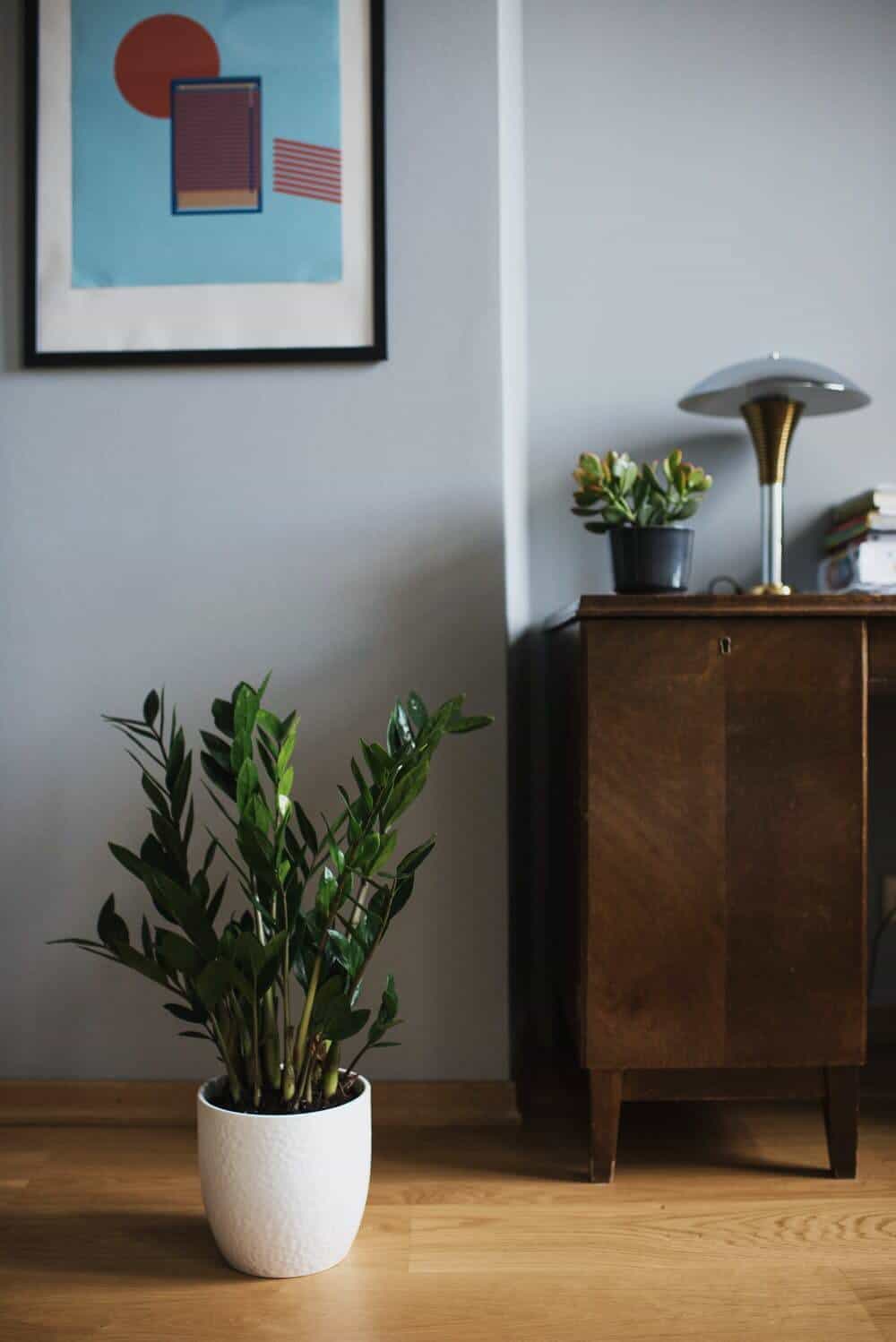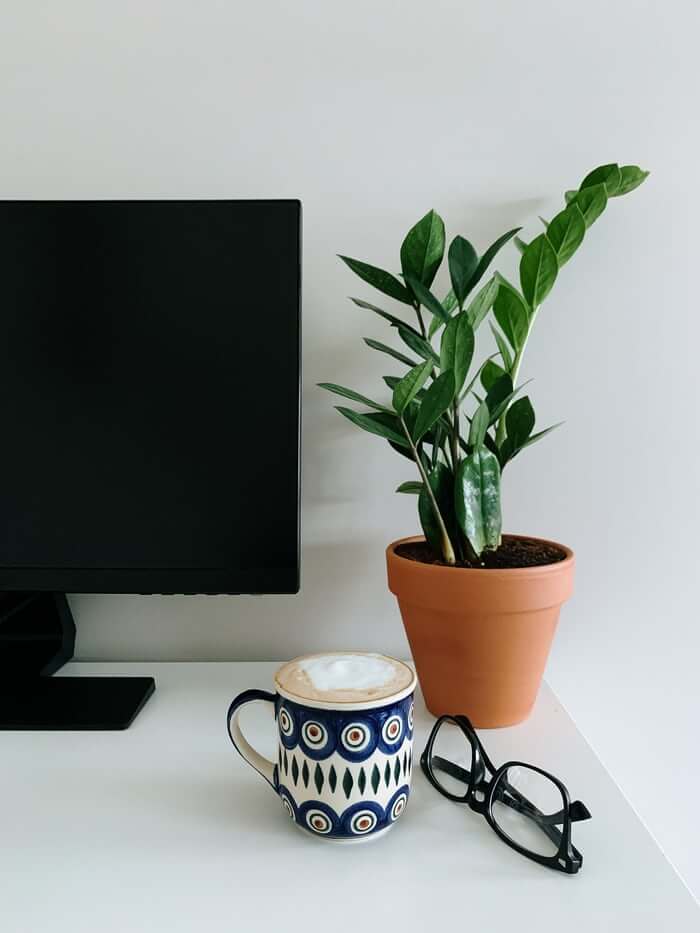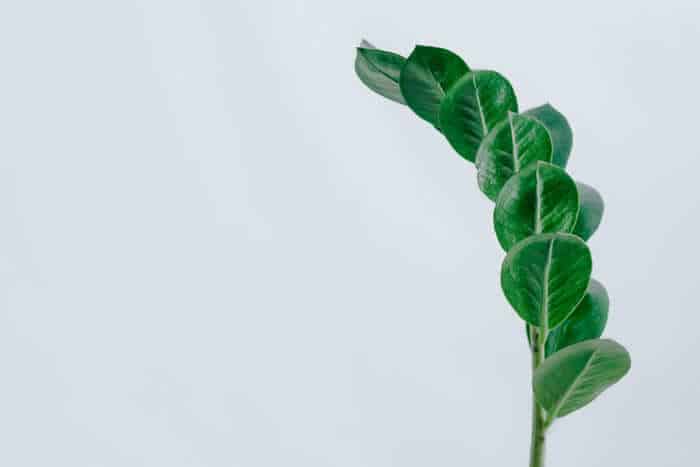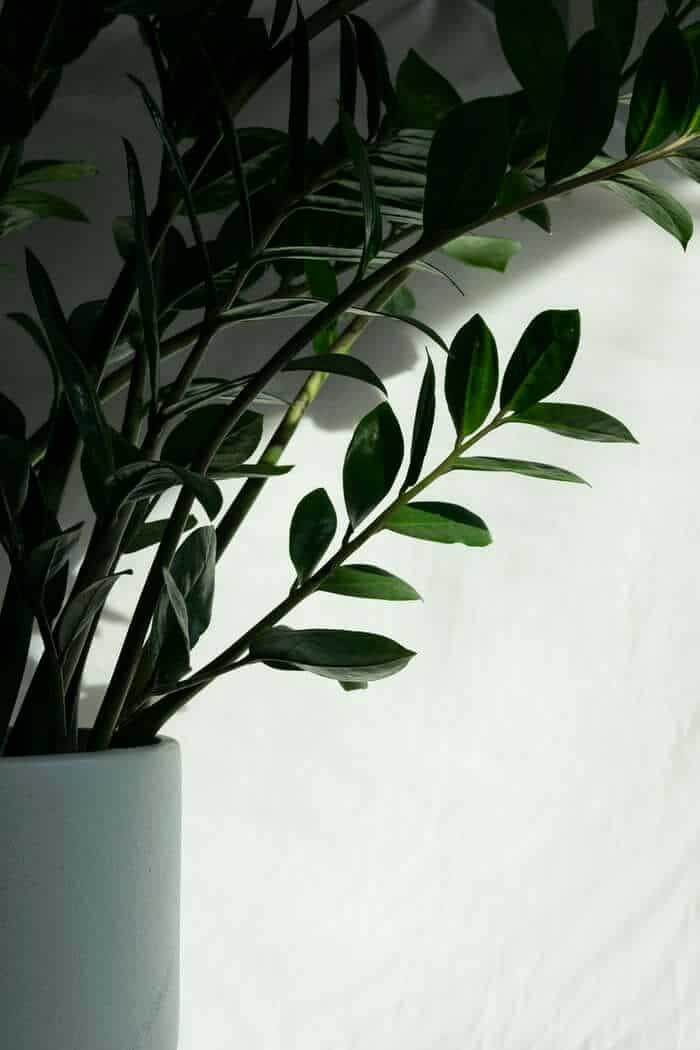Last Updated on June 2, 2023 by a Friendly Gardener
If you are in the market for a truly low-maintenance houseplant, the ZZ plant is it! Often referred to as the Zanzibar Gem, the Zamioculcas zamiifolia, belongs to the Araceae family. Glossy, oval-shaped leaves in a striking dark green make ZZ stunning in any indoor décor. Plus, it’s a great plant for those without a green thumb.
The ZZ is a native of Eastern Africa, where it commonly deals with drought conditions. This plant was introduced internationally in 1996 thanks to Dutch nurseries that worked in South Africa and began ZZ plant distribution internationally. What’s great about the ZZ is that it can live even when neglected, making it incredibly popular.
The ZZ tolerates low light conditions and drought. This makes it perfect for offices, lobbies, and waiting rooms that don’t have large windows or direct sunlight. A slow-growing plant, it can reach heights of two to three feet when cultivated indoors. The ZZ does not outgrow its container rapidly or often.
This tropical perennial is a perfect choice for beginner gardens, but also for office workers and business owners that want beautiful greenery as part of their business décor. As the ZZ doesn’t require daily care, it is ideal.
ZZ Plant Care

A good soaking every several weeks and decent light will have your ZZ thriving. The ZZ’s ample glossy foliage will require occasional dusting as they may begin to appear dull. Do not use leaf shine spray due to the risk of clogging the leaf pores. It is sufficient to gently wipe leaves with a moistened soft cloth to return the natural glossy appearance. The ZZ is a low-maintenance house plant that will ask very little of its owner.
Soil
ZZ thrives in regular potting soil if it is well-draining. Select a pot with good drainage and various drainage holes. Add several handfuls of sand or perlite to your soil bed mixture.
Light
The ZZ is a hero when it comes to light. It is highly tolerant of multiple lighting conditions making it an ideal plant for any number of indoor locations. They can survive without natural light but will flourish in bright indirect light. When the light is insufficient, a ZZ will begin to look “leggy” as it reaches for the light. Avoid direct light to prevent scorching foliage. Rotate your ZZ every few days to ensure the entire plant receives light.
Water and Humidity
The ZZ has thick tubular rhizomes beneath the soil surface which is what makes these plants so drought tolerant. Infrequent watering is more than adequate. Only water your ZZ when the soil bed is completely dried out. Depending on the climate, this may be weekly or once biweekly. Should you forget to water you don’t need to worry as these plants will survive without water for several months. Better you should underwater a ZZ. If your ZZ receives brighter light, you can water a bit more frequently. In lower light conditions, water less often. If you travel, don’t worry! Your ZZ will be there when you return home.
ZZ does not need a humid environment, so average home humidity is fine. If your home or office tends to be arid, consider a space humidifier. Your ZZ can also be positioned on a water tray to increase area humidity a bit. To create a water tray, fill a tray with pebbles and add water to it. The plant pot should not touch the water but sit above the water line.
Temperature
Average household temperatures are ideal for a ZZ. They do not tolerate cold, so they should not be positioned where temperatures dip lower than 45° Fahrenheit. Protect your ZZ from the risk of drafts in your home by positioning it away from drafty windows, doors, hallways, or air vents.
Feeding
The ZZ does not need feeding to grow or survive. During the growing season, you can treat your ZZ by feeding it once or twice. Feed your ZZ with a quality indoor 20-20-20 liquid plant fertilizer diluted to half-strength.
Pruning
If the branches become intrusive, prune them. ZZs can flower from mid-summer to the beginning of autumn. Blooms are smallish. The ZZ is appreciated more for its beautiful glossy foliage.
Repotting

Repot your ZZ when it outgrows its current container. A ZZ will tell you that it needs a new pot because the rhizomes beneath the soil bed surface, will press against the pot’s sides and potentially warp the pot’s shape.
Repot in the springtime or the summer because the ZZ handles repotting during the growing season much better than in other periods. New pots require a good number of drainage holes.
ZZ Propagation
You can propagate the ZZ with leaf cuttings or through plant division. Plant division is the easiest choice to create new ZZ plants. Separate the rhizomes when you repot your ZZ plant, then plant them individually in new containers.
To use leaf cuttings for ZZ propagation, cut a stem segment with at least two leaves. Plant it directly in well-draining potting soil. Position your cutting in a warm location with bright indirect light. Stem-cutting propagation is slower than a rhizome division so new rhizome growth should appear after six to nine months.
ZZ Toxicity

The ZZ became rather famous approximately ten years ago when rumors circulated indicating that the ZZ was incredibly toxic and caused cancer. The info circulating was that the ZZ should be avoided. This was, of course, entirely false.
All ZZ plant parts are slightly toxic to cats and dogs, as well as humans because the plant including all its parts contains calcium oxalate crystals. Calcium oxalate crystals are sharp-edged and irritate when ingested or touched.
Calcium oxalate will irritate the mouth and the digestive tract if ingested. Should you find a plant part that has been chewed watch for your pet for excessive drooling, vomiting, or appearing to have difficulty breathing. If you suspect ZZ plant poisoning, get your pet to a veterinarian asap.
Common signs of calcium oxalate poisoning may include:
- Mouth pain or discomfort
- Excessive drooling
- Foaming at the mouth
- An irritated mouth, lips, eyes, or tongue
- Pawing at the mouth
- Difficulty breathing
- Difficulty when swallowing
- Loss of appetite
- Diarrhea
- Tremors
- Vomiting
Pests, Diseases, and Problems
A ZZ plant is relatively resistant to pests and generally remains free of infestations. If you notice signs of pests common to houseplants like aphids, mealybugs, gnats, whiteflies, or mites, treat your plant for pests with diluted neem oil. Spray it on your plant weekly and remove any pests manually if possible.
Occasionally, the Zanzibar Gem can suffer stress. Signs will include:
- The ZZ plant begins to wilt and the soil bed is dry. Water your plant.
- Foliage appears wrinkled. Water your plant.
- Foliage is yellowing or mushy. The soil bed is wet. Your plant is drowning from overwatering.
- The ZZ plant begins to bend. Light may be insufficient.
- Your ZZ plant is yellow. This probably indicates root rot and may be due to insufficient drainage. Control that the drainage holes drain. Remove any extra water. Repot your plant with two parts potting mix to one part river sand.
A yellowing plant can also indicate a lack of nutrients. In this case, fertilize your ZZ every two weeks. Your plant may also be rootbound. If the plant is root bound, it is strangling itself as the roots circle around the container’s inside. Repot your ZZ. Remove the plant and untangle the roots. Trim any roots longer than an inch.

- The ZZ’s foliage has sap drops on it. This indicates a healthy plant, so no worries.
A Final Consideration
Whether you have a varied indoor garden or want to begin adding some greenery to your home or office, the ZZ is a lovely houseplant. It might be too tall for a shelf or table, but it looks great as a floor plant and accents décor beautifully when set to the side of furniture. The ZZ is a resilient plant that makes a great gift for beginners and those who travel frequently. It’s also worth noting that you could consider switching to a variegated ZZ plant instead.

